Amphibious group
Three amphibious landing ships of the Baltic Fleet (Ropucha class, Project 775) have been travelling towards the Mediterranean for a week and have passed the English Channel. Two further Ropuchas and a large landing ship of the Ivan Gren class (Project 11711) of the Northern Fleet have left their bases and were only able to reach the North Sea and continue southwards after a delay due to the weather. Russia has announced that the ships' movements are allegedly aimed at naval manoeuvres in the Mediterranean that have already been announced for a long time. However, it is not clear whether these not insignificant landing capacities are ultimately intended to march through to the Black Sea off the coast of Ukraine.
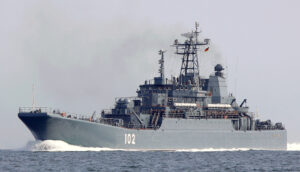
Varyag surface combat group
The flagship of the Russian Eastern Fleet, the Slava-class cruiser "Varyag", the Udaloy destroyer "Admiral Tributs" and the Chilikin-class naval supply ship "Boris Butoma" are currently in the Gulf of Oman. The Russian-Chinese-Iranian manoeuvre in which they are taking part is due to be completed at the beginning of this week. According to official information, these three will then also move towards the Mediterranean and rendezvous with the landing ships. The only thing missing now is some reconnaissance capacity. This is apparently being provided in the form of the Vishnya-class "Vasiliy Tatishchev" sighted off Gibraltar. The result is a cocktail that could make even the most sensitive Mediterranean observer dizzy.
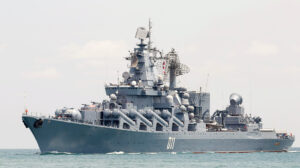
Coordinated exercise programme
According to the press releases, Russia will soon not only begin this Mediterranean exercise, but also an extensive series of manoeuvres worldwide, including in the North Atlantic and Pacific Oceans. Over 140 ships and 60 aircraft will be involved. On the naval and air force side, procedures are being practised to "protect Russian national interests and counter military threats", according to a further statement from the Russian Ministry of Defence.
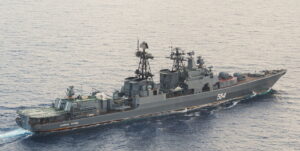
Open questions about the manoeuvre objective
Are these "normal" exercise plans? Normally, a notification period of six weeks is observed for troop deployments of over 9,000, and international observers are agreed for movements of over 13,000. Apart from the massive land forces off the Ukrainian border, both in Russia and after renewed Russian troop movements in Belarus - why reinforce the amphibious offensive component? Diversionary manoeuvres in the Mediterranean? Blockade of access to the Black Sea? Landing of any troops and equipment on the southern coast of Ukraine? Seen from above, it looks like a "respectable" pincer - at best a remarkable parenthesis! Current events leave some questions unanswered. The coming week will provide clarity.
NATO maritime forces in the Mediterranean
And it is precisely this week that the NATO exercise "Neptune Strike 2022", which has been planned for two years, then probably not quite as intended and has now been resumed, will begin on Monday in the Mediterranean. Persevere and show determination, or continue travelling and supposedly de-escalate? The Pentagon has decided to keep the carrier group around the 100,000-tonne Nimitz-class aircraft carrier "Harry S. Truman" in the Mediterranean and carry out this exercise. In addition to the carrier, the four Arleigh Burke destroyers "Bainbridge", "Cole", "Gravely" and the "Jason Dunham" are also part of the group. However, the composition of the forces involved in the exercise is still unclear. At the very least, the carrier is to remain in the area for the time being in order to show a strong presence and demonstrate support for the NATO countries in the Mediterranean.
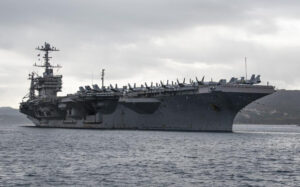
Spanish contribution
Spain has just dispatched the F100-class frigate "Blas de Lezo" (Alvaro de Bazan) from Ferrol/Galicia and the OPV "Meteoro" (type boat of the same class) from Las Palmas/Canarias to reinforce the NATO forces heading for the Black Sea. "Meteoro" will be the lead ship of the SNMCMG2 (Standing NATO Mine Countermeasures Group 2) in the Mediterranean / Black Sea for the next six months. Her departure has been brought forward by three weeks due to the current tense situation. The Spanish Segura-class minehunter "Sella" has already been part of the SNMCM2 in the western part of the Black Sea since the middle of the week.
German participation
A week ago, the last active F122 frigate "Lübeck" left its home port of Wilhelmshaven in Germany to join the Standing NATO Maritime Group 2 (SNMG 2) - not to enter the Black Sea, however, but to work together with the Turkish and Greek coastguards and the European Coastguard and Border Agency (FRONTEX) in the Aegean Sea and monitor the sea space used for the illegal organised transfer of refugees.
And now?
It can be assumed that, as the situation hardens, the NATO states closer to the Dardanelles will take additional units on standby and deploy them on an ad hoc basis. The Baltic Sea will naturally also come into focus - and not just after the preventive Swedish troop deployments to Gotland. The development of the current deployment of forces in the Black Sea should also be observed in detail. So far, however, the controversial statements made by former Vice Admiral Schönbach in India have overshadowed the maritime news situation.

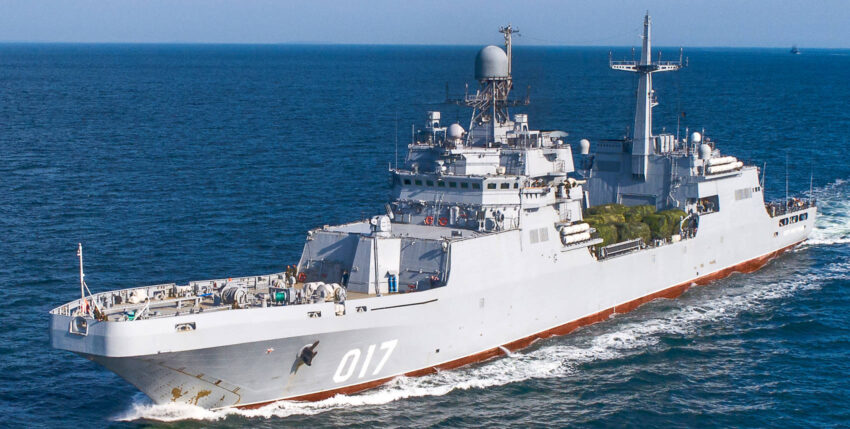








One Response
Thanks for the informative and concise compilation!